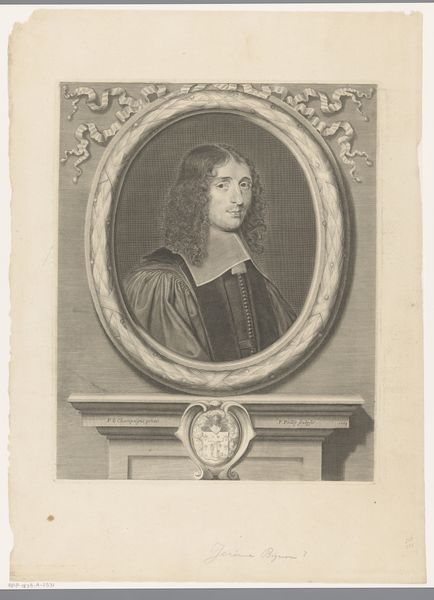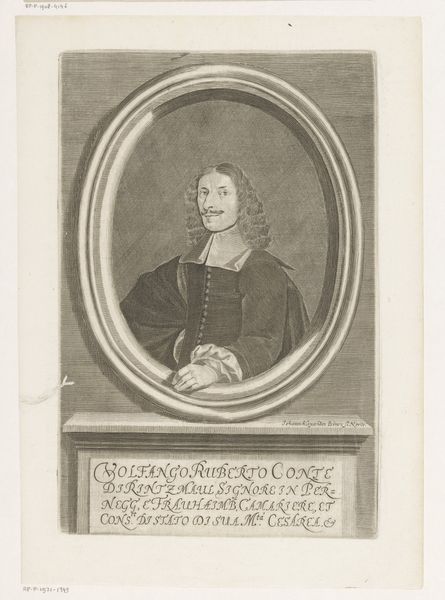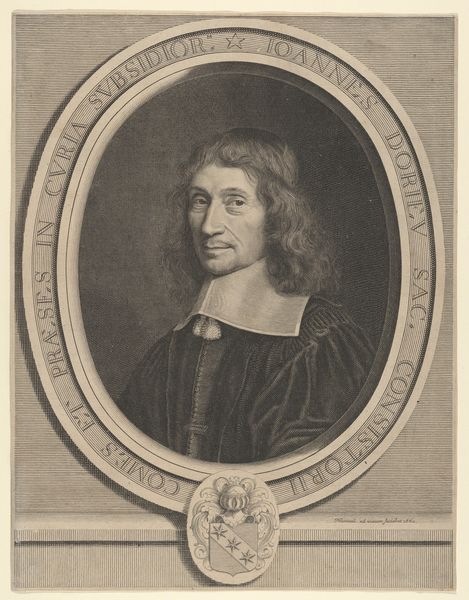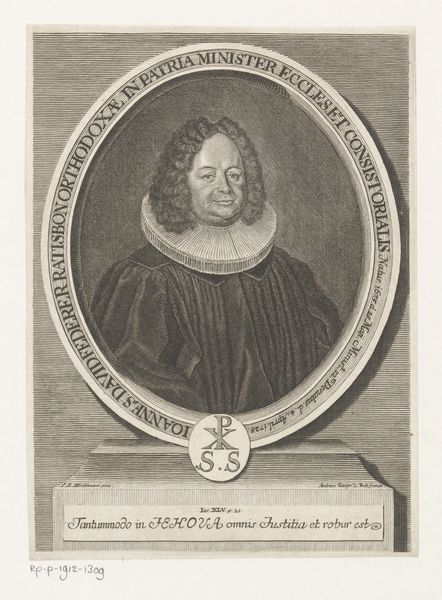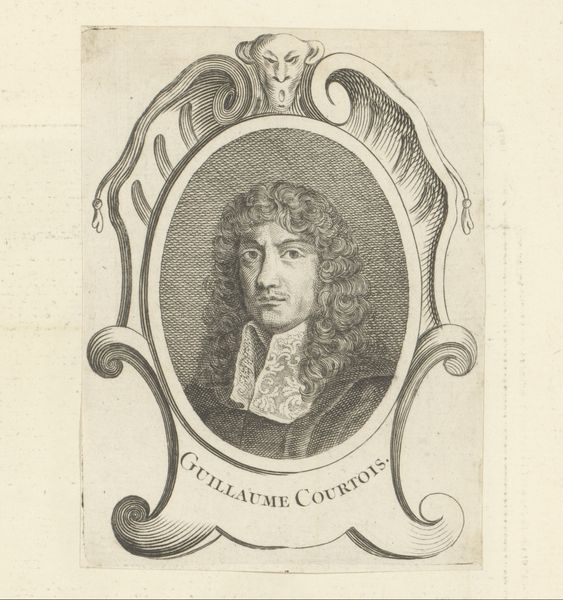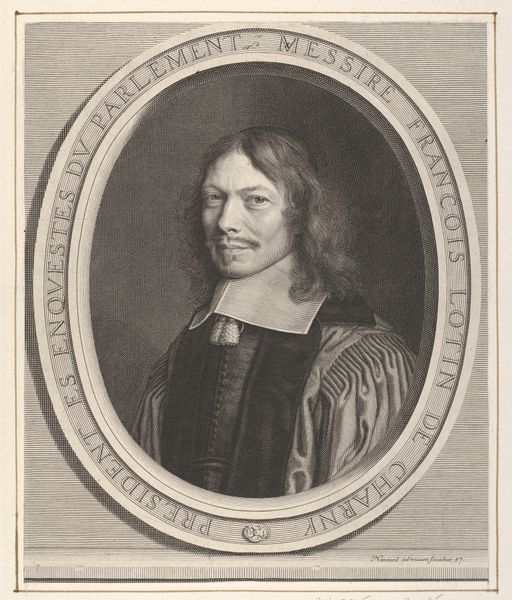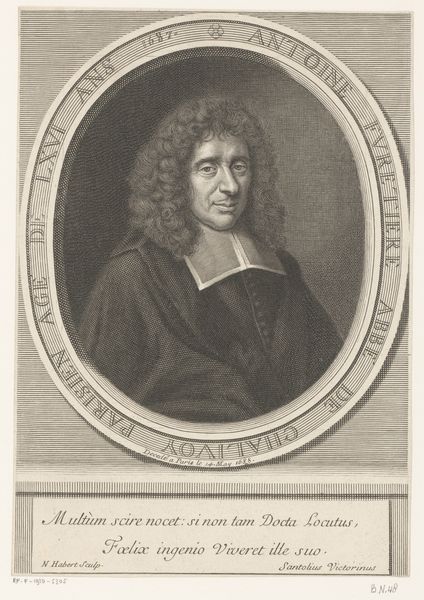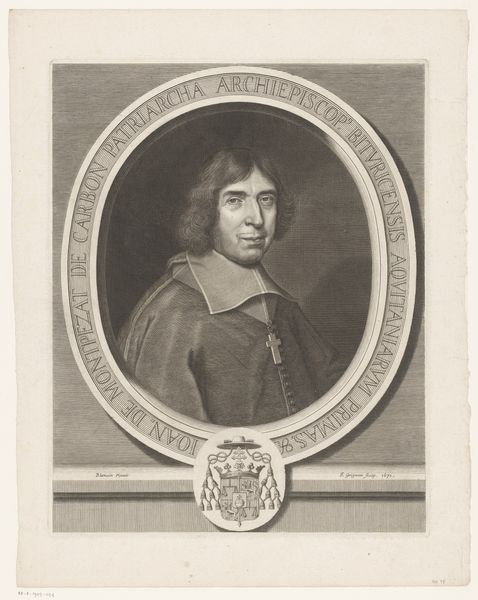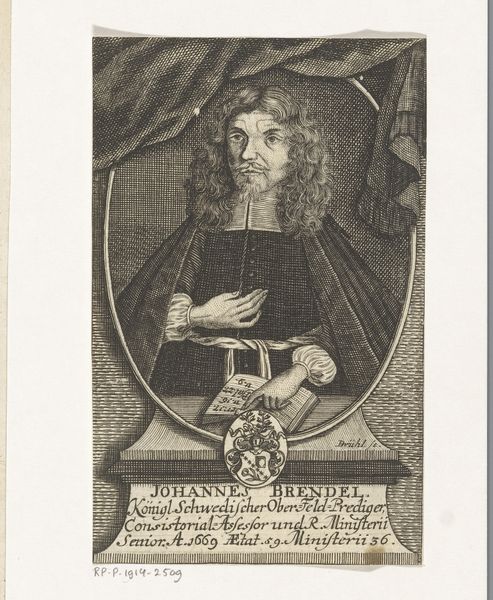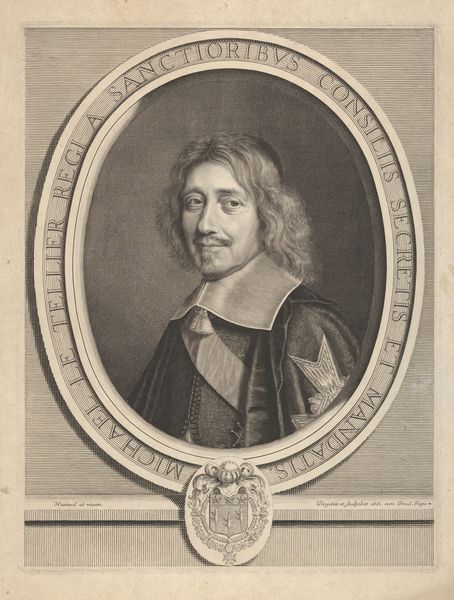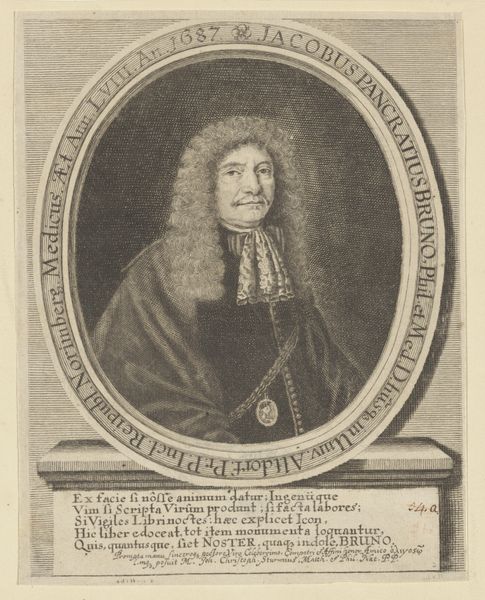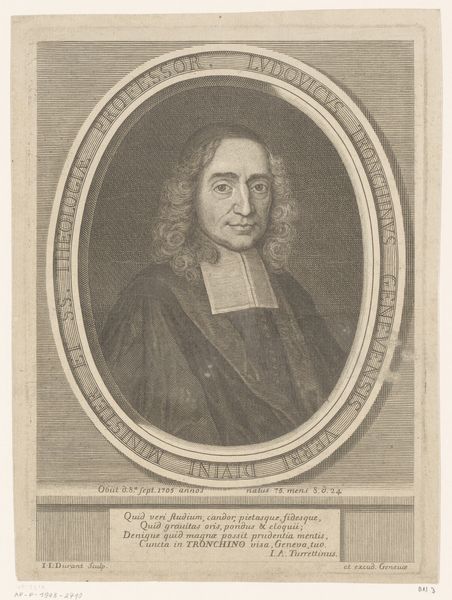
engraving
#
portrait
#
aged paper
#
baroque
#
old engraving style
#
old-timey
#
19th century
#
academic-art
#
engraving
Dimensions: height 192 mm, width 131 mm
Copyright: Rijks Museum: Open Domain
Curator: Looking at this engraving, "Portret van Olaus Verelius," likely created sometime between 1717 and 1747, what strikes you first? Editor: The precision of the lines! It’s a study in contrasts, really. The soft, almost ethereal quality of Verelius's hair against the sharp, rigid framework of the oval border and inscription below. Curator: It's a carefully crafted image, for sure. What's fascinating is how these portraits were commissioned to bolster an individual's, and by extension, a family’s social standing. The Latin inscription speaks of Verelius being a “phosphorus,” a bringer of light to the history of old things. Editor: Absolutely. Note how the artist meticulously rendered the textures. You have the fur collar suggesting wealth, then those small, closely spaced engraved lines giving depth to the face. All that hatching creates an almost photographic level of detail, conveying character through subtle variations in tone. Curator: Precisely. Think about the role Olaus Verelius played in Swedish society at the time; as a historian and philologist, his work legitimized Swedish claims to ancient glory. Prints such as these circulated widely among intellectual and political circles. Editor: It’s also how the composition directs the viewer's attention. Your eye travels from that solemn gaze, around the oval framing the figure, before resting on the carved stone with the engraving. Curator: The framing really solidifies Verelius as an important learned authority in the eyes of his contemporaries. It presents him in a classically respectable form that highlights status and wisdom, key elements in image construction in the late Baroque. Editor: Though a lot is communicated through form, it feels… controlled. His eyes don’t meet yours. You’re placed as an observer of Verelius’s stature. It's interesting, this level of formality also extends to how Geringius signed the piece at the bottom right with such minuscule markings that mirror his meticulous manner elsewhere. Curator: Yes. The portrait's stiffness becomes revealing. The intent isn’t just about representation, but about building and reinforcing Verelius's role within a specific cultural and political moment. This engraving speaks of status, intellectual achievement, and a desire to project a carefully curated public image. Editor: Thinking purely about composition then, there’s something profound about that contrast, something powerful created in the service of history itself.
Comments
No comments
Be the first to comment and join the conversation on the ultimate creative platform.
